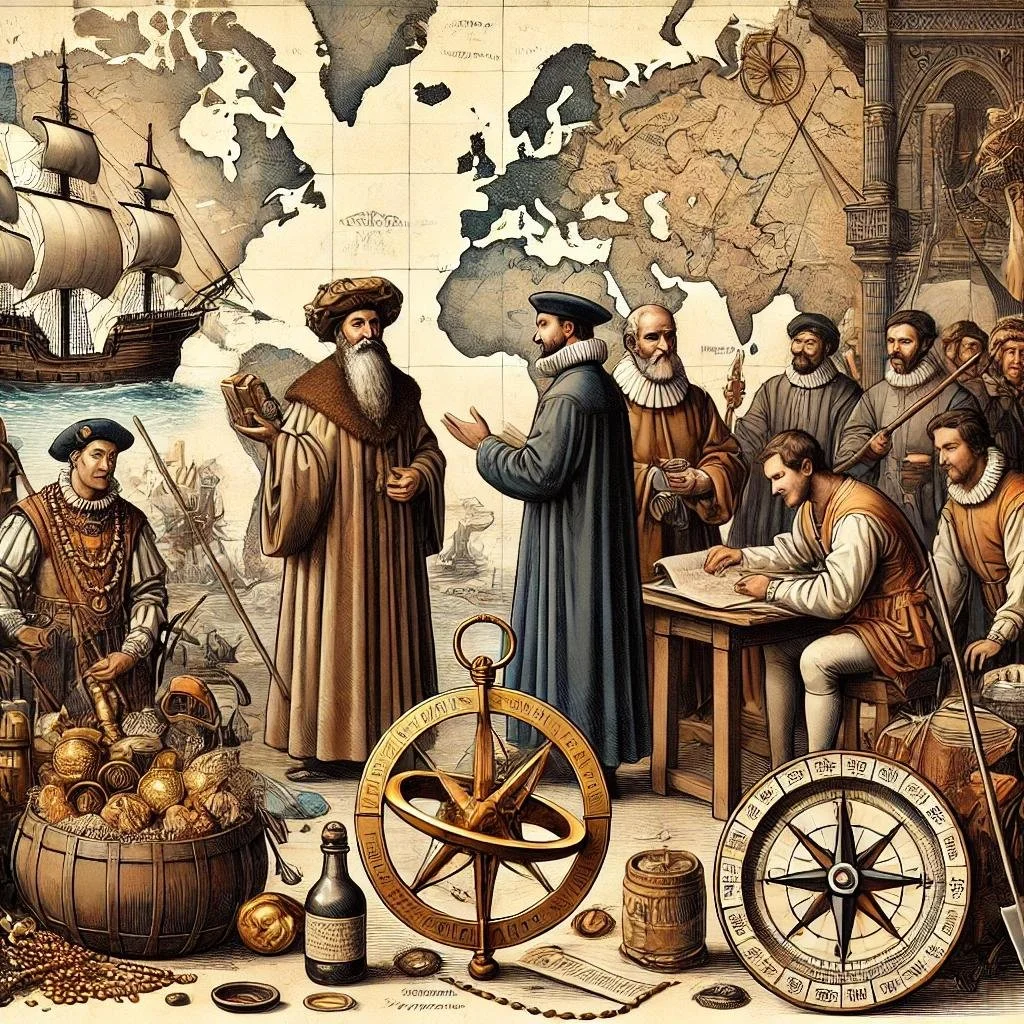Lesson 1: Great Voyages of Discovery (The Age of Exploration)
🌍 Desire and Opportunity to Explore
In the 1400s, Europeans wanted to explore the world. But why?
They wanted gold and spices from Asia.
They wanted to spread Christianity.
They were curious and wanted adventure.
They wanted new trade routes to become rich.
Soon, new technology made long trips possible:
Astrolabe – helped sailors know their location using the stars
Compass – showed direction
Caravel ships – small, fast ships that could sail far
With these tools, the world started to feel smaller.
⛵ Portuguese and Spanish Explorations
The Portuguese were the first to go far across the sea.
Prince Henry the Navigator opened a school for sailors. They explored the west coast of Africa and learned more each time.
In 1498, Vasco da Gama sailed all the way around Africa to India. He brought back spices and became a hero.
Spain wanted to find a faster way to Asia. In 1492, Christopher Columbus sailed west across the Atlantic. He found islands in the Caribbean, but he thought it was Asia!
Story: Columbus met new people, like the Taíno, and wrote about their kindness. But later explorers treated the natives badly and took land.
🗺️ Europeans in America
More explorers came to the “New World.”
Amerigo Vespucci said this was a new continent, not Asia. America is named after him.
Ferdinand Magellan tried to sail all the way around the Earth. He died in the Philippines, but his crew finished the trip in 1522—the first trip around the world!
Europeans started to build colonies in America. They wanted gold, land, and power. But this hurt the indigenous peoples, who lost their land and freedom.
🌐 A New European Worldview
The world looked different to Europeans now.
Before, maps were small and simple. Now, they saw new continents, oceans, and peoples. They began to ask:
What else is out there?
What can we learn?
The Age of Exploration changed how Europeans saw themselves and the world.
